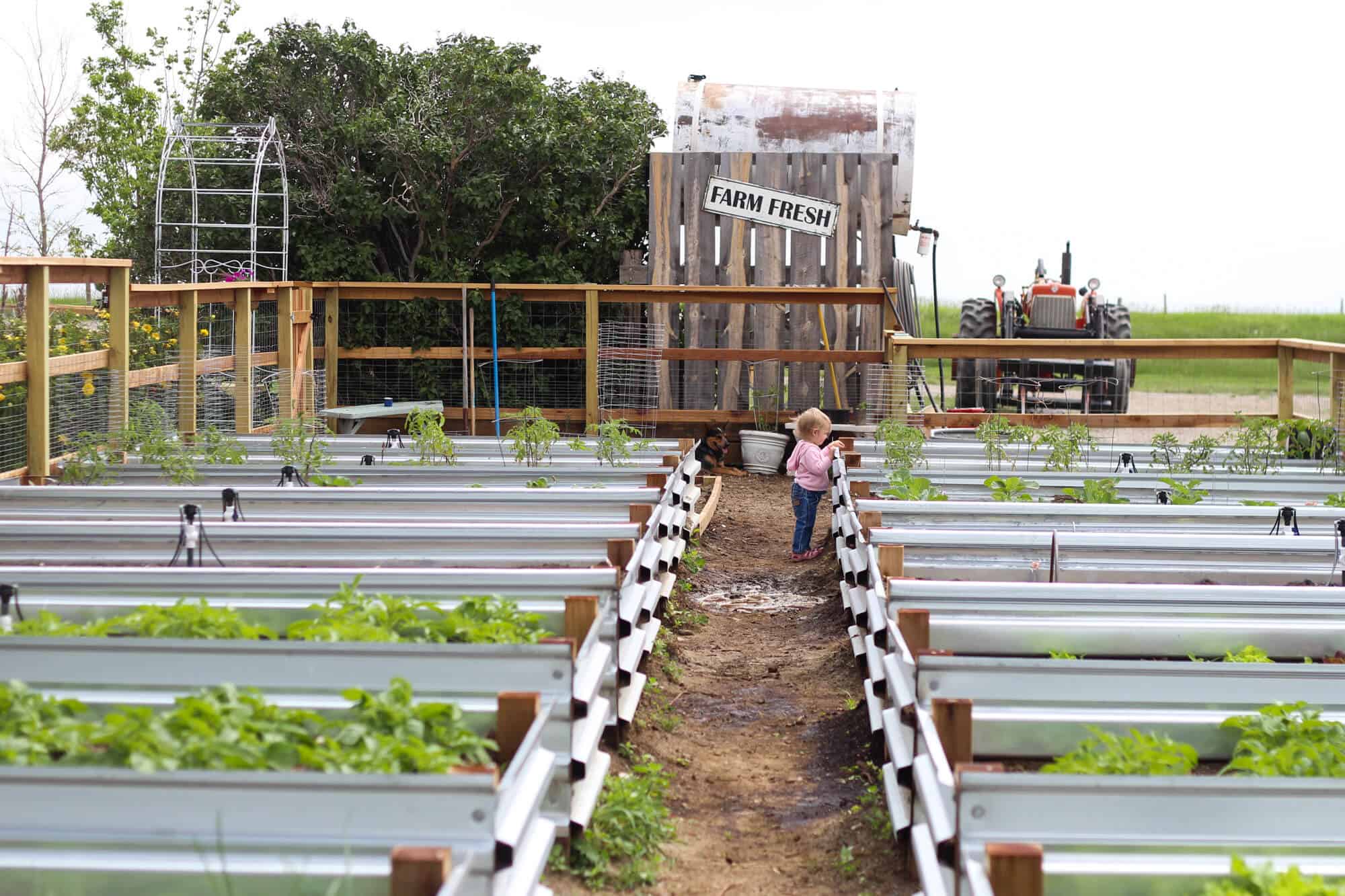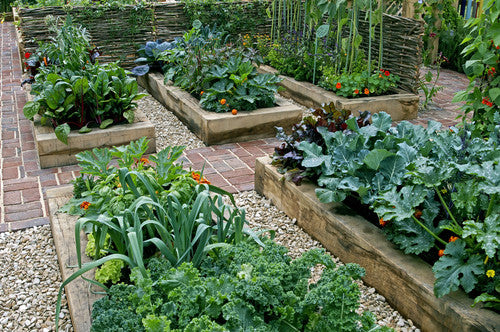The Ultimate Guide to Homestead Gardening
The Ultimate Guide to Homestead Gardening
Blog Article
Discover the Tricks to Developing a Beautiful and Productive Gardening Area
Developing a lovely and productive gardening area is not merely an issue of planting veggies and flowers; it calls for a critical strategy that encompasses various vital elements. From choosing the right location based on sunshine and dirt kind to thoughtfully designing your design and selecting ideal plants, each decision plays a pivotal function in the success of your garden.
Selecting the Right Area
Picking the ideal place for your yard is critical to its success and total visual allure. The very first step in this procedure involves examining sunlight exposure, as most plants require a minimum of six hours of straight sunlight daily (Homestead Gardening). A south-facing yard typically receives the most light, while shaded areas can impede growth and flowering
Furthermore, take into consideration dirt high quality and drainage. Well-draining dirt is necessary to prevent water logged origins, which can lead to plant illness. Performing a dirt examination can give useful details relating to pH degrees and nutrition web content, allowing you to change the dirt as necessary.
Furthermore, closeness to water resources is another element to weigh - Homestead Gardening. Having easy access to a hose pipe or watering system can streamline the watering procedure and encourage regular plant care. Wind security is also important; placing your yard near structures, such as fences or wall surfaces, can secure it from severe winds that might harm delicate plants
Last but not least, consider ease of access for upkeep and harvesting. A well-placed garden permits convenient accessibility, making sure that you can easily often tend to your plants without triggering undue tension or disturbance. Thoughtful area selection lays the foundation for a thriving garden.
Choosing Plants Sensibly
When choosing plants for your garden, it's necessary to think about variables such as climate, soil problems, and personal choices to make certain a efficient and unified area. An extensive understanding of your local environment will direct you in picking plants that grow in your certain environment. Picking drought-resistant varieties is useful in arid areas, while moisture-loving types may be extra ideal for areas with high rains.
Soil problems are equally essential; carrying out a dirt examination can reveal pH levels and nutrient content, allowing you to select plants that will grow. Indigenous plants are commonly an excellent selection, as they are generally well-adapted to regional dirt kinds and call for much less upkeep.
Show on your personal choices-- selecting plants that resonate with your visual preferences will improve your satisfaction and dedication to keeping your yard. By meticulously reviewing these aspects, you can develop a diverse and flourishing plant choice that boosts your gardening experience.
Creating Your Garden Design
With an attentively selected plant selection in hand, the following action is to develop a garden layout that optimizes both beauty and performance. Begin by assessing the offered space, thinking about factors such as sunshine, wind, and color patterns. A tactical layout needs to integrate numerous areas, consisting of locations for planting, pathways, and possibly seating.
Start with bigger plants or centerpieces, such as trees or tall perennials, placed purposefully to create visual passion. why not try these out Layer smaller plants ahead to improve deepness and structure. Think about the growth habits of your selected plants; taller varieties ought to be placed at the back or center of beds, while shorter ones can line the sides.
Integrating paths not only facilitates accessibility for maintenance yet likewise invites expedition. Usage products that complement the yard's general aesthetic, whether rock, gravel, or wood chips.
Furthermore, think of seasonal adjustments and exactly how your format will certainly look throughout the year. Including evergreens alongside seasonal flowers can make certain year-round beauty. Eventually, a well-designed garden format integrates the natural beauty of plants with practical factors to consider, causing a space that is both welcoming and productive.
Enhancing Soil Wellness

To improve soil health and wellness, begin by performing a soil test to examine pH degrees, nutrient web content, and soil texture. Integrate organic matter such as compost, well-rotted manure, or fallen leave mold to enhance dirt structure, water retention, and microbial task.
Mulching is another effective approach; it not just saves moisture however likewise reduces weeds and gradually enhances the soil as it breaks down. Preventing excessive husbandry is essential, as it can interfere with soil framework and injury valuable microorganisms. Instead, adopt no-till or minimal husbandry techniques to maintain soil integrity.

Maintaining Your Garden Properly
A well-maintained garden provides satisfaction and productivity, requiring regular focus to make certain that plants prosper and the landscape continues to be welcoming. Reliable garden upkeep involves several key practices that boost the health of your plants and the general aesthetic of your area.
Regular watering is crucial; nonetheless, it is essential to tailor your watering timetable based on the details needs of your plants and neighborhood climate problems. Mulching can help preserve moisture, subdue weeds, and control soil temperature level. Additionally, timely weeding prevents competitors for nutrients and sources, making sure that your plants thrive.
Trimming is one more essential job. It motivates healthy and balanced growth, gets rid of diseased or dead branches, and shapes plants to preserve an enticing structure. Additionally, monitoring for diseases and pests is crucial; early discovery and treatment can conserve your plants from considerable damages.
Fertilization should be executed attentively, utilizing organic choices whenever possible to advertise long-term soil health and wellness. Lastly, seasonal tasks such as growing, separating perennials, and getting ready for winter months will ensure your yard remains dynamic year-round. By adhering to these practices carefully, you can grow a garden that is both gorgeous and efficient.
Verdict
Choosing a suitable area with adequate sunlight, picking appropriate plants, making a cosmetically pleasing design, boosting dirt health and wellness, and making sure normal upkeep are important elements. By integrating these methods, one can grow a prospering garden useful source that not only boosts the landscape however also promotes ecological equilibrium and sustainability.
From choosing the right location based on sunlight and soil type to attentively developing your format and selecting ideal plants, each decision plays a crucial function in the success of your garden. Well-draining soil is essential to protect against waterlogged origins, which can lead to plant conditions.When image source choosing plants for your yard, it's important to consider variables such as climate, dirt problems, and individual choices to ensure a harmonious and efficient space. Inevitably, a properly designed yard design integrates the all-natural beauty of plants with sensible factors to consider, resulting in a room that is both inviting and productive.

Report this page